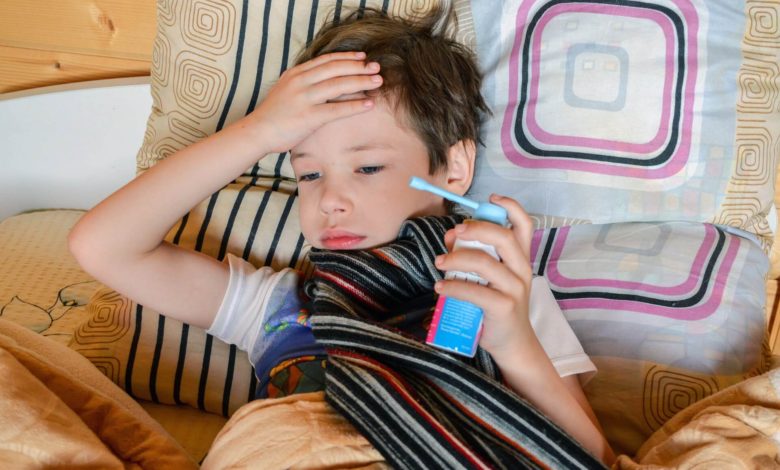Management and Treatment of Acute Wheezing in Children

It is important for parents to describe their child’s wheezing correctly and to check whether this recipe fits the description of the child’s symptoms. Most people use the word “growling” to describe a wide variety of audible breath sounds, but the clinical definition is specific; In the form of a loud high-pitched, musical or whistling sound coming from the chest. When diagnosing wheezing, the following should be questioned;
• Nature and duration of wheezing, including whether it is continuous or intermittent.
• Presence of other respiratory symptoms
• Aggravating factors and triggers
• Previous chapters
• Smoking status of the household
• Whether the child has any eczema or other symptoms or signs of atopy
• Whether there is a family history of atopy
Physical examination is primarily used to help identify potentially serious causes of wheezing. Ideally, the child’s wheezing should be evaluated during the examination to confirm that it meets the clinical definition of wheezing, but this will not always be possible.
The exam should include a general assessment of the child, including respiratory rate, heart rate, temperature, and oxygen saturation (if a pulse oximeter is available). In a child with acute wheezing, the examination should assess for concurrent upper respiratory tract infection, eg. Otitis media or pharyngitis. Observe the child’s chest to assess for signs of hyperinflation and respiratory distress, such as intercostal withdrawal and use of accessory muscles. Do auscultation of the child’s chest and note any wheezing or crackling and focal sounds.
Laboratory and respiratory studies are generally not used to evaluate wheezing in preschool children. Further investigations such as chest x-rays are often reserved for children with symptoms from birth or wheezing that are unusually severe, unresponsive to a treatment trial, or accompanied by unusual clinical features. Peak-flow, spirometry, and other assessments of lung function are generally not used in children under the age of five, as they cannot provide a reliable and consistent result between tests.
Management of Wheezing in Children
Management of wheezing preschool children should begin with a clear discussion with parents about the possible prognosis of the child’s illness and limitations of treatment. It should be explained that the diagnosis will usually become clear over time and that pharmacological treatment can be used to relieve symptoms, but does not alter the natural course of the child’s wheezing and does not prevent the development of asthma. Because the type of wheezing can change over time before the age of five, the child’s symptoms will need to be reassessed regularly.
Treatment of Acute Wheezing Attacks
• Bronchodilators babies with bronchiolitis should generally not be treated with bronchodilators as they show minimal benefit.
• Children under five with episodic viral or atopic wheezing may be tried in a short-acting bronchodilator for symptomatic control.
• When necessary, bronchodilator therapy should be done with a short-acting beta agonist (SABA). Salbutamol 100 micrograms is recommended, with a maximum of 800 micrograms per day for children.
• This should be administered by inhalation, using a spacer and mask. Instructions should be given regarding the correct use and cleaning of the device.
Long-acting beta-agonists (LABAs), although potentially effective for young children with wheezing, are generally not recommended as there are several strong studies showing their benefits or safety in young children.
• Theophylline is not recommended for use in children with wheezing or asthma.
Oral corticosteroids
In a child with acute severe wheezing requiring hospitalization, oral corticosteroids are recommended and may be given while awaiting transplant. In a child with acute severe wheezing that does not require hospitalization, the use of oral corticosteroids is less obvious and should be based on clinical judgment. Evidence for the effectiveness of oral corticosteroids in children under the age of five is limited and often conflicting, with most studies focusing on older children. If necessary, oral prednisolone can be given 1-2 mg / kg per day for a maximum of 40 mg for three days.





